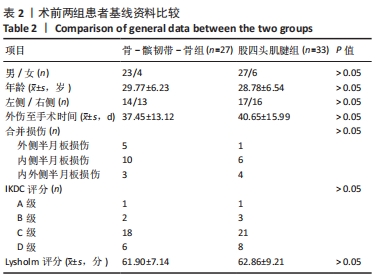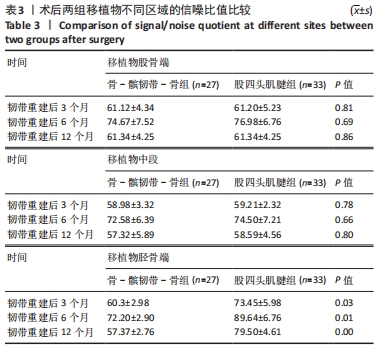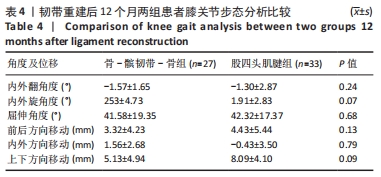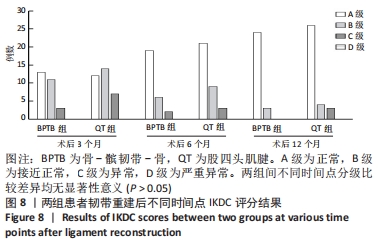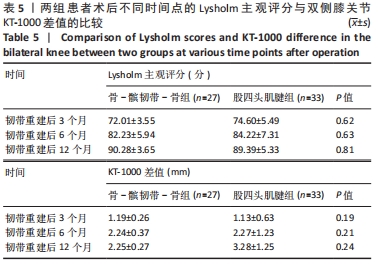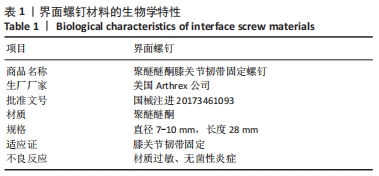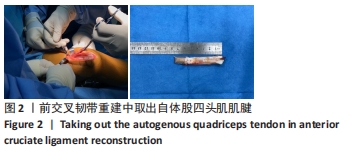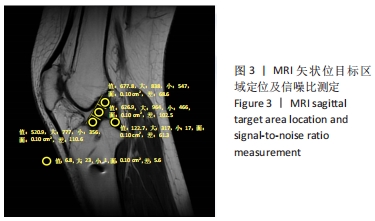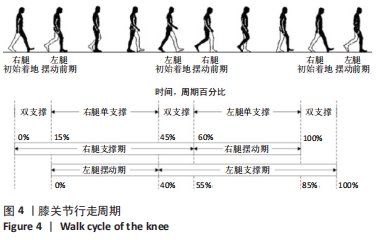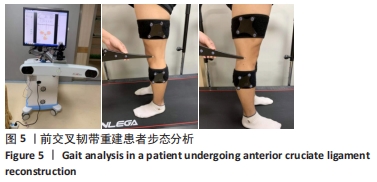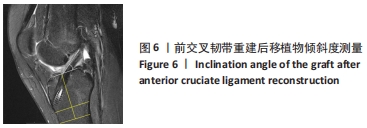中国组织工程研究 ›› 2022, Vol. 26 ›› Issue (6): 963-968.doi: 10.12307/2022.186
• 骨与关节图像与影像 bone and joint imaging • 上一篇 下一篇
MRI评价自体骨-髌韧带-骨与股四头肌腱行前交叉韧带重建后移植物成熟度及膝关节的功能
杨匡洋,王昌兵
- 佛山市中医院,广东省佛山市 528000
MRI evaluation of graft maturity and knee function after anterior cruciate ligament reconstruction with autogenous bone-patellar tendon-bone and quadriceps tendon
Yang Kuangyang, Wang Changbing
- Foshan Hospital of Traditional Chinese Medicine, Foshan 528000, Guangdong Province, China
摘要:
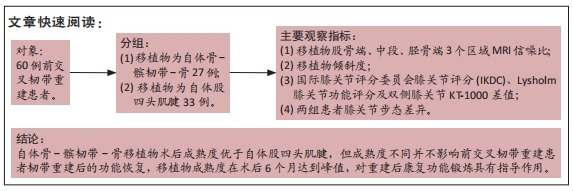
文题释义:
成熟度:前交叉韧带重建后移植物在关节内重塑及成熟的过程通常被称为“韧带化”,此生物愈合过程是肌腱样移植物逐渐成熟向韧带样移植物转化的过程。成熟度的测量方法为:信噪比=(前交叉韧带移植物信号强度-后交叉韧带信号强度)/背景信号强度,保留原生前交叉韧带残端重建、骨隧道的位置及形态、移植物选择、移植物与骨髓道之间的角度以及移植物远端血运状况是关节内移植物成熟的影响因素。
移植物:韧带重建为前交叉韧带损伤后治疗的首选方法,自体移植物的来源主要包括骨-髌韧带-骨、自体股四头肌腱及腘绳肌肌腱,因骨-髌韧带-骨的韧带特征及在隧道内骨与骨的良好愈合,被认为是前交叉韧带重建的“金标准”,韧带重建后MRI成熟度显示优于自体股四头肌腱及腘绳肌肌腱,但每种移植物均有其优缺点。
背景:前交叉韧带重建术中一般采用自体骨-髌韧带-骨、股四头肌腱或腘绳肌肌腱作为移植物,其中关节内移植物的成熟度是前交叉韧带重建后恢复患者运动的关键。
目的:分析使用自体骨-髌韧带-骨与自体股四头肌腱行前交叉韧带重建后的移植物成熟度及患者膝关节功能差异。
方法:选择2018年6月至2020年1月在佛山市中医院行前交叉韧带重建术的患者60例,其中男50例,女10例,年龄17-42岁,韧带重建使用自体骨-髌韧带-骨移植物者27例,使用自体股四头肌腱移植物者33例。韧带重建后3,6,12个月,比较两组移植物股骨端、中段、胫骨端3个区域的MRI信噪比;比较两组患者国际膝关节评分委员会膝关节评估量表(IKDC)评分、Lysholm 主观评分及双侧膝关节KT-1000差值;对比两组患者韧带重建后12个月的膝关节步态差异。研究获得佛山市中医院医学伦理委员会批准,批准号:2018003。
结果与结论:①韧带重建后3,6,12个月,两组间移植物股骨端、中段的MRI信噪比比较差异无显著性意义(P > 0.05),股四头肌腱组移植物胫骨端MRI信噪比高于骨-髌韧带-骨组(P > 0.05);②韧带重建后3,6,12个月,两组间的IKDC评分Lysholm 主观评分及双侧膝关节KT-1000差值比较差异无显著性意义(P > 0.05);③韧带重建后12个月,两组患者膝关节步态分析比较差异无显著性意义(P > 0.05);④结果表明,使用自体骨-髌韧带-骨移植物行前交叉韧带重建后的移植物成熟度优于自体股四头肌腱,但成熟度不同并不影响患者韧带重建后的功能恢复。
https://orcid.org/0000-0001-8055-8247 (杨匡洋)
中国组织工程研究杂志出版内容重点:人工关节;骨植入物;脊柱;骨折;内固定;数字化骨科;组织工程
中图分类号:

